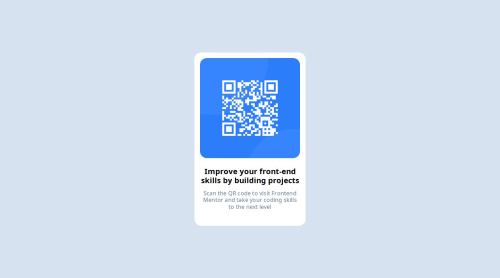Building a QR Code Component with HTML and CSS

Solution retrospective
I am most proud of my ability to work with HTML confidently and efficiently. While I'm still developing my skills with CSS, I managed to navigate the styling challenges for this project with relative ease. However, I recognize that I haven't yet established a consistent workflow for CSS styling. Moving forward, I am eager to refine my approach and build a more effective rhythm for styling. I look forward to future challenges as opportunities to improve and solidify these skills.
What challenges did you encounter, and how did you overcome them?I initially faced some confusion regarding the project's design. The challenge was determining whether the soft, muted blue background images or the larger white background (with designs) image should be considered the primary background. Since the provided materials only included the design with the soft, muted blue background and did not provide materials for the designs on the white background image, I decided that the soft blue was the primary background. This choice aligned with the available design elements and ensured consistency in the final project.
What specific areas of your project would you like help with?At this stage, I’m not certain which specific areas might pose challenges that I cannot address on my own. However, I would greatly appreciate any feedback on my current work that could highlight potential issues or areas for improvement. Your insights would be valuable in helping me enhance my project.
Please log in to post a comment
Log in with GitHubCommunity feedback
No feedback yet. Be the first to give feedback on KS-Coder24's solution.
Join our Discord community
Join thousands of Frontend Mentor community members taking the challenges, sharing resources, helping each other, and chatting about all things front-end!
Join our Discord